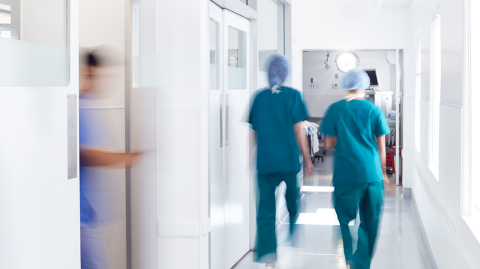
Real Time Healthcare Services (RTHS)
Chronos Technology partners with Airista Flow - recognised again in 2024 as a LEADER in the Gartner® Magic Quadrant™ for Indoor Location Services.
Airista’s hardware can build on your existing Wi-Fi network to resolve position to within 50cm, and the Sofia software platform allows presentation and analysis of this data, plus the easy automation of processes and workflows.
Real Time Location (RTLS)
Keeping track of assets across a hospital is a vital element of maintaining smooth operations and ensuring the best possible care can be provided.
Tools like spreadsheets and paper-based systems allow staff to record and log the whereabouts of equipment, but it requires manual input to remain up to date.
By using RTLS technology to inventory and track medical equipment and other hospital assets, the real-time location of items become entirely automated and workflow orchestration helps ensure coordinated patient care, allowing staff to focus on what matters most: providing high-quality healthcare to patients.
Workplace Security
Healthcare facilities are not immune to violence or other types of occupational safety hazards, particularly inpatient facilities. If employers leave their workers inadequately equipped, they may be unable to call for help during an incident, leading to potentially serious injury.
The best solutions provide immediate notification for healthcare workers in distress together with constant communication of real-time location to security personnel and staff in nearby proximity. Likewise, technology can also alert to falls and person-down situations.
The aim should always be to prevent workplace violence but enabling appropriate and timely response may minimise risks to all.
Patient Flow
Minimise delays and bottlenecks that cause overcrowding, hinder quality care, and harm the patient experience.
Use of RTLS solutions provides an easy-to-use view of patient movement, status, and location. By identifying delays and areas of congestion that cause poor patient flow, healthcare organisations can make improvements to increase efficiency and patient satisfaction.
Use of this data can then be used to trigger events or processes. For example, an alert can be sent to a staff member as they approach a hand washing station, and the station can feedback when that person washes their hands.
Building on this approach, the movement of a patient due to be discharged out of their ward could trigger a series of steps to prepare for their discharge, and to mobilise to prepare their bed for the next patient.